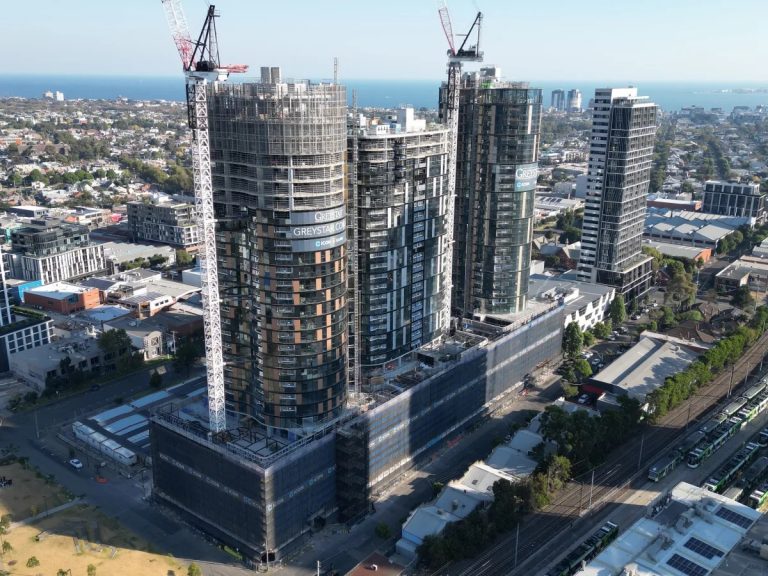What are the types of commercial property loans?

There are at least six different types of commercial property loans, but the loan you choose will depend on your potential purchase, collateral, commercial experience, and patience.
If time is of the essence, industry experts recommend low doc and no doc loans, which enable investors to enjoy financial results within 24 hours, although such results can come with higher interest rates.
In comparison, full doc or standard, commercially or residentially secured loans may take months for lenders to appraise and approve, but enjoy lower interest rates.
Read on to find out what commercial loan is best for you.
1. Commercially secured loans

From warehouses to retail stores, every commercial venture needs backing from a careful property loan. Picture: Getty
Investors use a commercial property they already own as financial collateral to secure their next commercial property, utilising either variable or fixed interest rate options.
The general loan to value ratio rate for commercially secured loans is 65-70%, depending on the value of the current and potential assets, according to Grow Capital managing director, Nick Wormald.
However, some of the major banks offer LVRs of 80%, Mortgage Choice broker Alston Soff said.
“There is a disclaimer to this though as this rate is only for small businesses, borrowing up to $1 million,” Mr Soff said.
“The asset also has to be a standard commercial property acceptable to the bank.”
What are the standard interest rates for commercially secured loans?
For variable loans, Nick Wormald suggested a rate of 2%-6% with a fixed rate of 1.8%-2.5% for two years.
Meanwhile, Alston Soff counselled a mid 3%-low %4 variable rate with 2.5%- 2% for a fixed rate.
2. Residentially secured loans
Another commercial loan option is to use a residential property as security.
However, Mr Wormald said investors should understand some important points before choosing this option.
“There are all sorts of regulations out there around consumer lending that have to be taken into account, so it’s very important that the borrower has advice from an accountant on how to structure their loan,” he said.
The consumer credit code regulated by ASIC ensures that as a rule, investors can’t secure the home they currently live in as business collateral, according to Mr Wormald.
“You can do it but there are a lot of rules involved,” he said.
However, Mr Wormald explained investors with the option to run a commercial business from another residential investment property should certainly do so with plenty of lenders able to help out in these situations.
“It’s a lot easier to borrow money against your residential security as it’s a commodity that’s traded a lot, so you might get 80% LVR on it,” he said.
What are the standard interest rates for residentially secured loans?
Nick Wormald encouraged investors to look for rates of up to 5%.
Can I combine commercial and residential security loans?
Combining commercial and residential collateral for a commercial loan is an excellent option for investors.
As well, a mixed-use loan sees a commercial property combined with a residential building secured together as one loan.
Lending rates for combined and mixed-use will differ depending on the lender and how much of the entire property will be used for commercial and residential purposes.
3. Using a SMSF for a commercial loan

Stack your property loan boxes in the best place possible, even if that means thinking outside the box. Picture: Getty
This option is heavily regulated, both assets and uses are restricted, and the available lender panel is shrinking daily, according to Mr Wormald.
“For the lenders, it’s too hard and they don’t want to get involved,” he said.
“Clients have to charge thousands of dollars to the lender just to get all the work done, along with all the legal agreements.”
Mr Soff concurred that none of the major lenders offered SMSF commercial loans anymore, due mainly to the regulations surrounding SMSFs.
“Now, you only have the likes of Liberty Financial and La Trobe Financial [offering SMSF loans] but even they are fairly selective of the SMSF loans that they take on,” he said.
“As well, the interest rates can be quite high while the LVRs can be quite low.”
What are the standard interest rates for SMSF commercial loans?
Look for rates of mid 5%, Mr Soff said.
4. Low doc loans

Low doc and no doc commercial loans allow investors to step away from piles of planning and paperwork. Picture: Getty
Just as the names suggest, low doc and no doc commercial loans enjoy very little paperwork, swift financial results and they very rarely fall over, according to Mr Wormald.
“These loans are very popular at the moment and the vast majority of the stuff we see in our business right now is going through the low doc process,” Mr Wormald said.
“There’s the speed of the process, less documents and just less stuff that’s required.
“We don’t want to see financials, we don’t want to see any of that stuff.
“What we want you to do is declare that you are earning a certain amount of money.”
Mr Wormald said such proof usually came in the form of an accountant declaration or business activity statements (BAS), depending on the lender’s requirements.
“Low docs are a slightly higher risk for the lender because they’re taking your word for it but at the end of the day, the bank’s security really is the asset and they’re always in control,” he said.
“But a full doc loan is really overprotective, overcautious lending.”
What are the standard interest rates for low doc loans?
These rates should be around 3%, Mr Wormald said.
However, mid 3%-low %4 was acceptable, according to Mr Soff.
5. No doc loans
These loans can be a murky, largely unknown loan space but are nonetheless very powerful lending tools, which can save the day for investors, Mr Wormald explained.
“A no doc loan is basically a pure asset lend,” he said.
“Lenders won’t look at the borrowing entity or at the business borrower.
“They will look at them to make sure they’re not a criminal and that they exist but that’s about as far as it goes.
“And these loans are fast, turning around within 24 hours with the money in the bank.”
Mr Wormald said no doc loans were generally designed to be very short term, with generally only private lenders offering them as an option.
“If you need to take an asset off the table very quickly so you can settle on it, you can take these no doc loans out and it’s almost like a bridging loan,” Mr Wormald said.
“There is higher valuation and a lot of upfront fees but these loans can save the day.
“It’s very important to get a broker involved though as you can lose everything quickly.
“In fact, it’s very unlikely that you’ll find a lender that will lend directly to a customer as no docs genuinely go through experienced financial brokers.”
What are the standard interest rates for no doc loans?
Rates vary wildly for no doc loans, so expect to see anything from 7-8% to 50-60%, Mr Wormald explained.
6. BBSY commercial loans

Don’t walk past a commercial possibility for lack of a smart property loan. Picture: Getty
Also known as bank bill swap bid rates, BBSY loans are similar to a normal loan but interest is calculated based on the bank’s actual costs plus a margin.
Mr Wormald explained these rates were locked in for a very short period of time.
“The margin is a risk margin, so there’s a margin in there for the Treasury, and for the bank, there’s a liquidity margin, and there are customer transaction margins,” he said.
Mr Wormald said BBSY loans were ideal for highly experienced investors who know where the market is going; however, the major banks rarely offered these loans.
“You can lock in 30, 60, 90 days or more at your BBSY margin, or swap rate, plus the margin, and in 30 days, the bank will change this rate again,” he said.
“But for someone who doesn’t know what they’re doing, and who wants a set and forget loan, BBSY loans can get very expensive, very quickly.”







